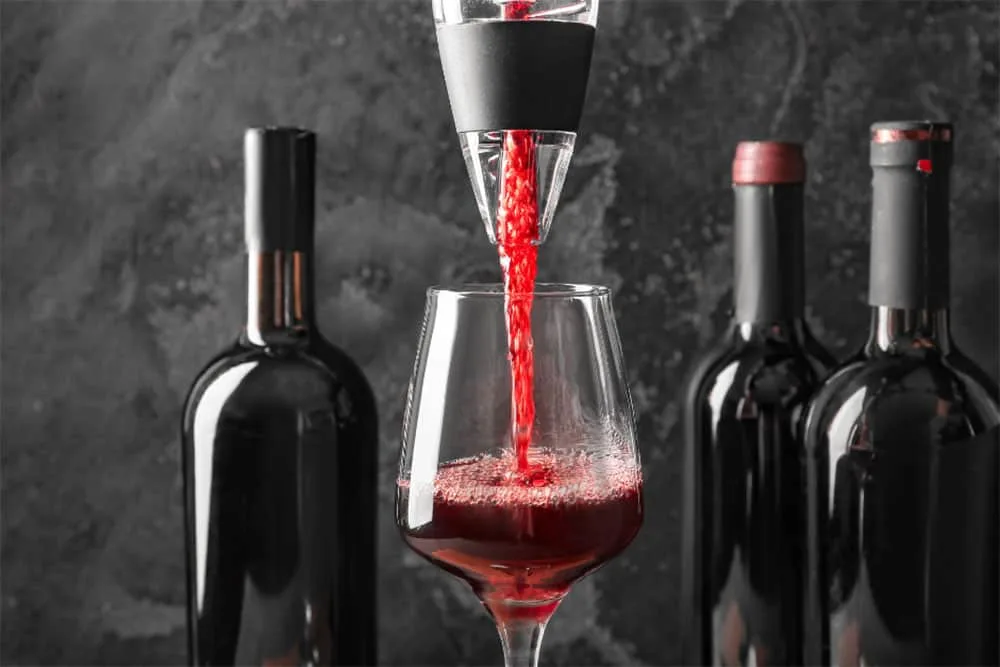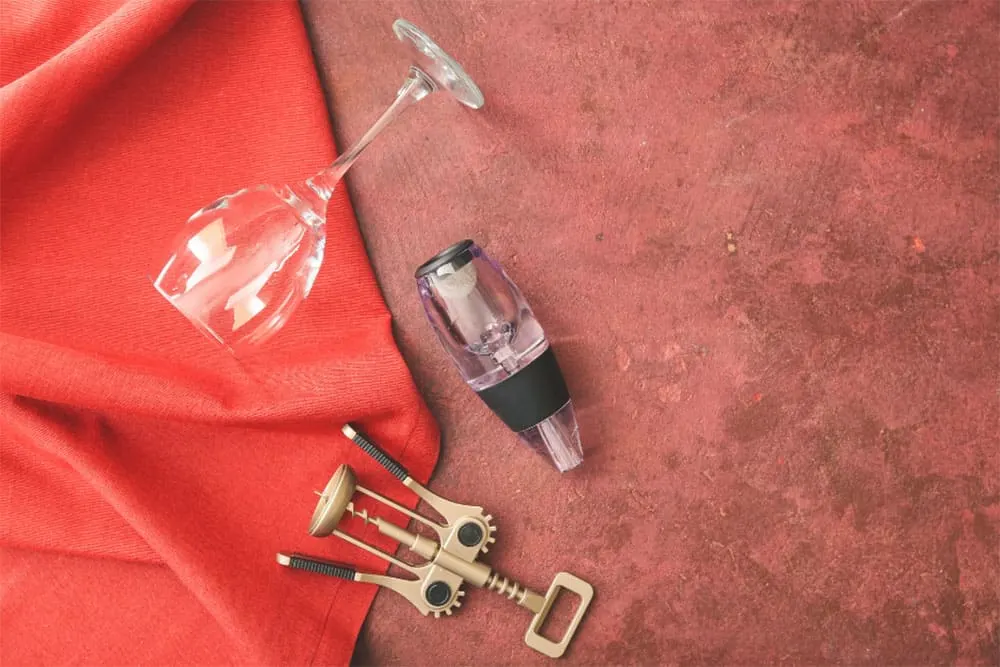White wine and aeration are two words that do not normally go hand-in-hand unlike red wine. We all know that a young red needs time to breathe in order for its delicious flavor to be fully realized.
Unlike a red, a white wine does not contain a lot of bitter tannins, so the aeration step is often completely ignored. However, did you know that a white wine could benefit from aeration just as much as red wine?
It is not a mystery that some white wines also have harsh notes, so aeration could be the perfect way for you to mellow the tanginess and bring out the fruity flavor to its fullest.
What Is Aeration?

The process of aeration is actually really easy. It is basically the action of exposing the wine to some air, to put it very simply, but let’s get into the details.
When a wine is bottled up, it is swimming in its own compounds and tannins, the stuff that can make wine taste bitter. When you pour wine out of the bottle, it mixes with the fresh air and starts a process called oxidation.
This helps to break down the strong tasting preservatives and ‘opens’ up the wine’s flavor profile making it more enjoyable.
The older the red wine, say 9 to 10 years, the more sensitive it becomes to aeration, so when this is the case, they do not need the same amount of aeration time.
Should We Be Thinking About Aerating White Wine?
Because white wine contains fewer tannins, we do not tend to think about aerating it. It is a much sweeter, crisp wine and does not tend to have that same bitter taste like the red.
Also, white wine used to be aged in wood but it moved onto steel instead due to it bringing out a more crisp taste.
This could be the reason why some people say that red wine is the only real wine and will turn their nose up at white, but we shall swiftly move past that comment!
The thing is, aeration is probably not needed when it comes to white wine, but it can be just as beneficial to white as it is to red, but you will have to be picky.
We are talking about the full-bodied, packs-a-punch, kinda white wines that are similar to a red. So, perhaps the white Bordeaux, a Chardonnay or Sauvignon Blanc.

The oxygenation will open up the flavors and release a delicious aroma, potentially giving a cleaner allround taste.
Also, a dry white wine will benefit more because they tend to have a tart flavor, and by aerating it, it will help to take some of that sharpness away and emphasize the full flavor instead.
If you have a cheap bottled white wine bought quickly from the grocery store, then it probably will not come as a surprise that it is likely to be a sharp drink.
Aerating it will dampen the tang and give it better flavor.
How To Aerate White Wine
Most of us like to drink a white wine when it is cool and crisp, so it almost feels counterproductive to leave a white settled in a decanter for 30 minutes at room temperature (read about the differences between a decanter vs aerator here).
It makes sense to serve white wine at a cooler temperature, in fact, it is necessary to. Keeping it cool boosts the fruity flavor and aroma, and actually helps its natural acidity.
The only way to aerate a white wine is through electronic means. It keeps it cool but also oxidized.
An electric wine aerator means you can emphasize the flavor but also keep it cold and crisp. Not only that, you can do this per glass which is a great way to taste the difference.
Last Words
Wine can be a scary conversation. There is no other beverage on earth that can give a person so much self-doubt and a need to grasp as much knowledge about it as possible.
It is easy to drink something without a second thought, but when it comes to wine, it is best to understand the different areas such as how it is aged and what aeration is, to the different types of wine and even how to taste it properly.
Aeration on the other hand is simple, especially with white wine. So long as the wine has a similar full-bodied flavor to red wine, it could benefit going through aeration.
Think about how sharp it tastes and whether you would like to mellow it out and bring in the fruity flavor more. If so, look into aerating. You will not look back!

